How we prepared for a milk cow. What things did I gather up to have on hand and prepare for when we got our first milk cow?
This post may contain affiliate links. Read my disclosure policy here.
Buying our first milk cow was one of the best decisions we ever made.
It has been far better and far more rewarding then I ever even imagined.
Some people are just built for this, and this is definitely one of my God-given callings.
I’ve quickly become obsessed and can’t wait to add more cows!

I try to care for our animals as holistically and naturally as possible, so my natural medicine cabinet for the animals is pretty large. But sometimes there is a need for more extreme conventional care. So what I prepared to have on hand is a bit of a mix of both. Then we also have just basic grooming and milking supplies outside of medical care. You also need to take into account where you will be keeping the cow, pasture, fencing, shelter. It’s better to think through all this and be more prepared beforehand instead of scrambling at the last minute when something goes wrong.

How we prepared for a milk cow
My medicine cabinet
- Dynamint
- and other organic mastitis treatments from Synergy
- Vitamin C
- Propylene Glycol
- CMPK for preventing milk fever after calving
All of those items I get from Synergy
- Colloidal silver (I use for pinkeye mainly)
- Oregano essential oil
- Tea tree essential oil
- Garlic
- Raw apple cider vinegar
- Tri-pectate for calf sickness or scours
Milking supplies
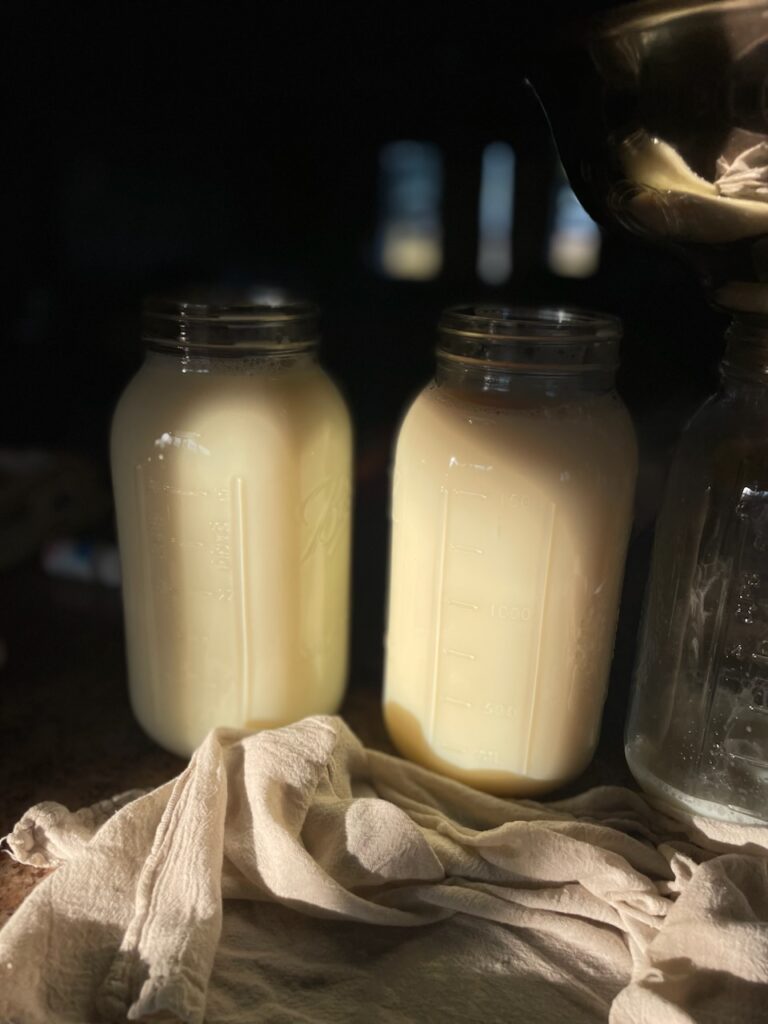
- Milk funnel and filters
- 1 large and 1 small seamless stainless steel bucket
- Teat dip
- Iodine
- Half gallon mason jars
- CMT test (for mastitis) and/or Dr Naylor mastitis tests. CMT is more accurate I think, but the other ones are a bit more convenient.
I use two milk buckets for milking. I have a small one that I milk into and then a large 5 gallon one that I set nearby with a clean towel covering the top. Then I dump the smaller bucket into the larger one a few times during milking so that at least most of it is safe from being kicked or stepped in by Charlotte. Plus we always get more than we can fit in the smaller bucket anyway, and milking into the giant 5 gallon one would just be really difficult.
Read more about how to milk a cow here.
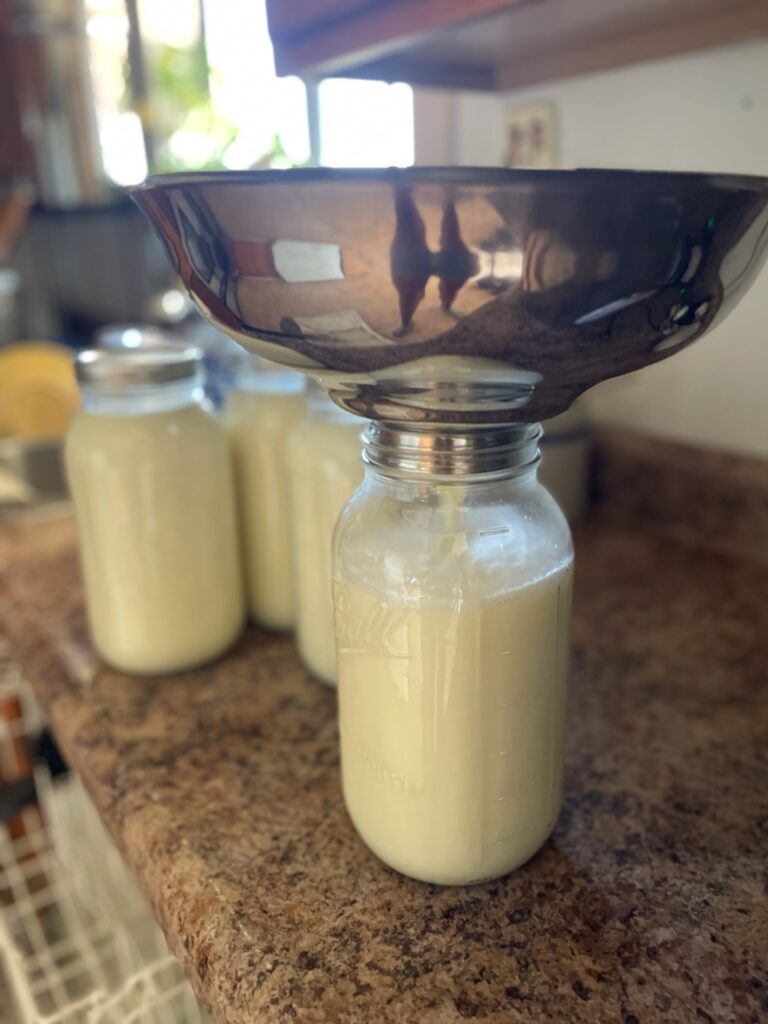
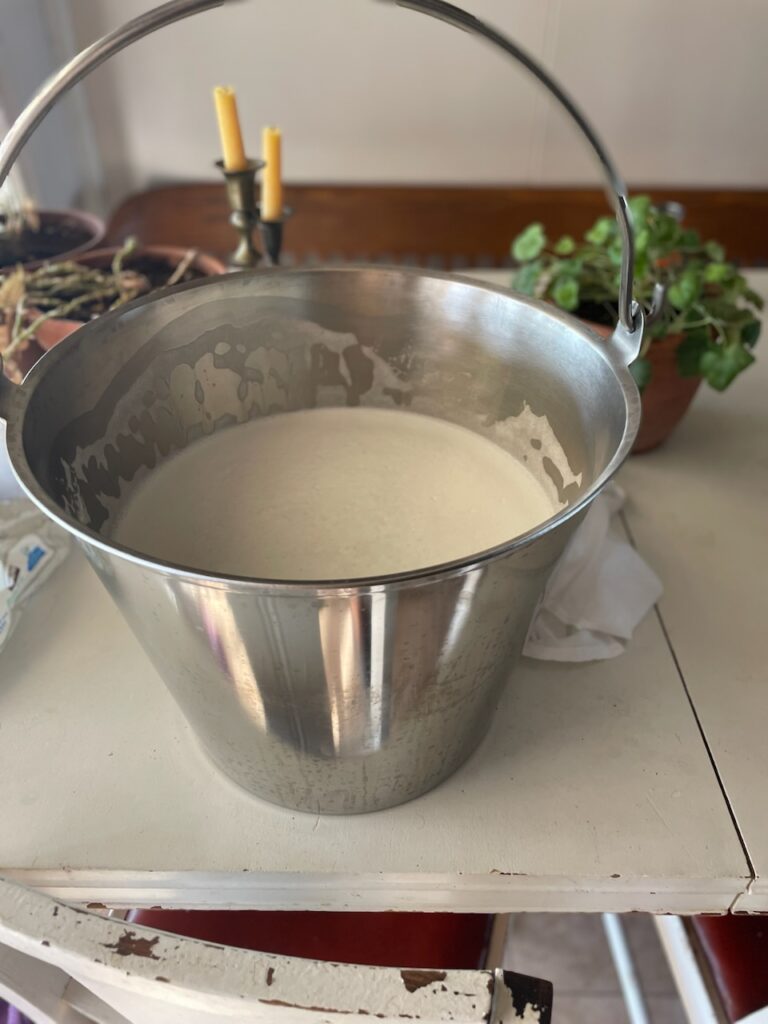
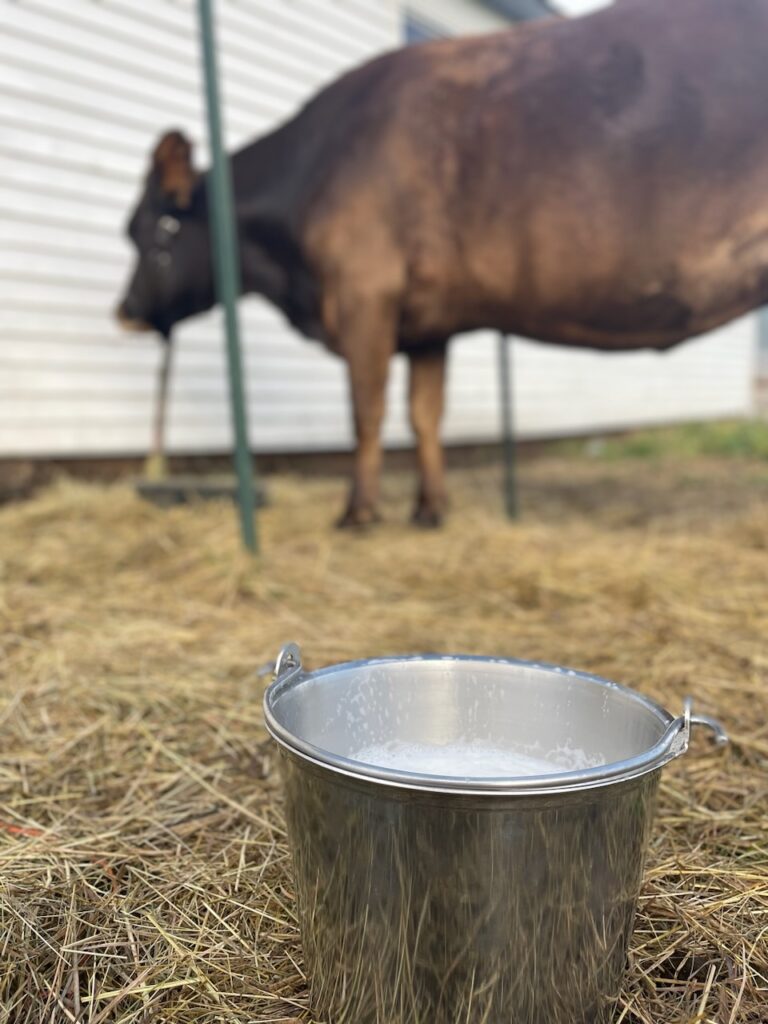
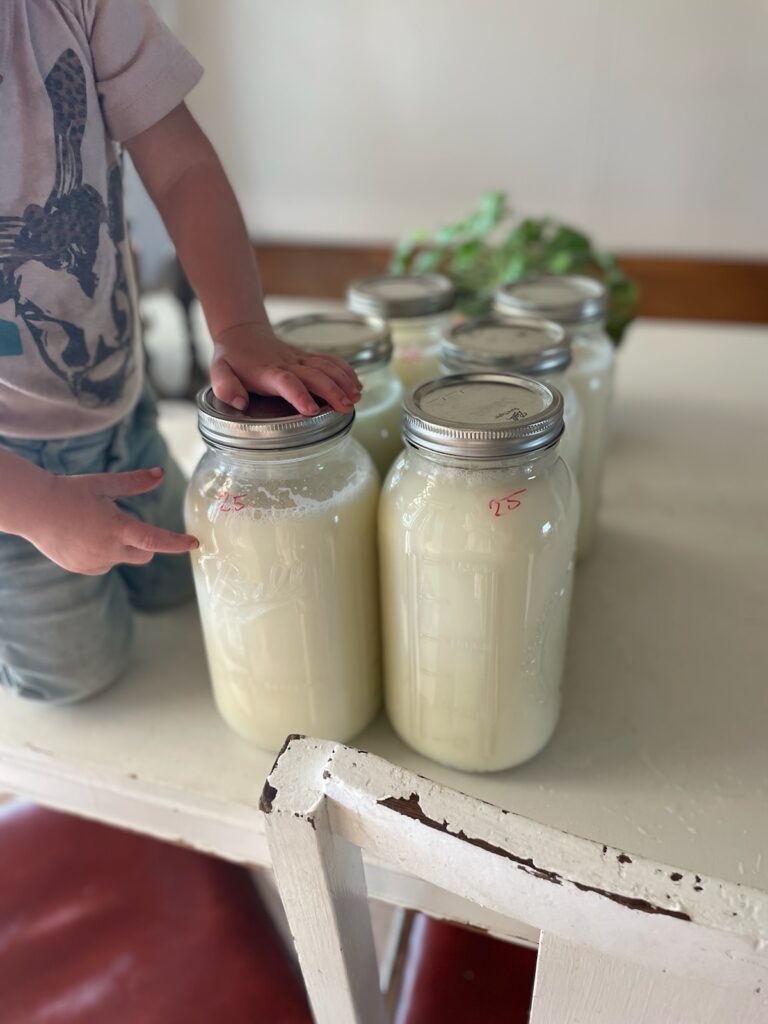
This section also includes where you plan to milk. Do you need a stanchion for this particular cow or can you just tie her to the fence?
We milked Charlotte just tied to the fence for over a month and a half before Luke built the stanchion, she’s a really good girl. We mostly built the stanchion so we could do her AI to get bred, but it is handy for milking too. Not necessary for Charlotte, but helps her hold a little more still.


Calf supplies
- Vitamin C
- Raw apple cider vinegar
- Tri-pectate for calf sickness or scours
- I always get a selenium shot with other vitamins from our vet to give in the first few hours after birth
- Syringe
- Bottle and nipple (you might not plan to bottle feed but its good to have on hand just incase anyway)
- DuraLyte calf paste
- DuraMate calf paste

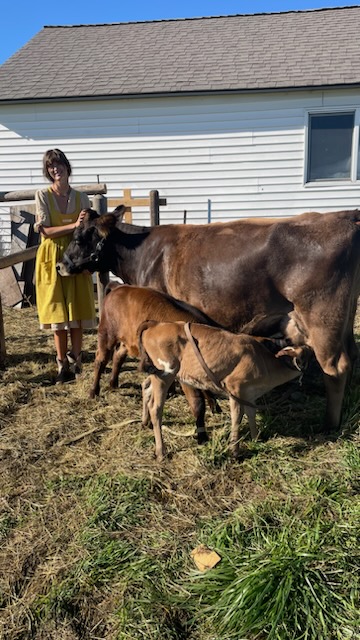
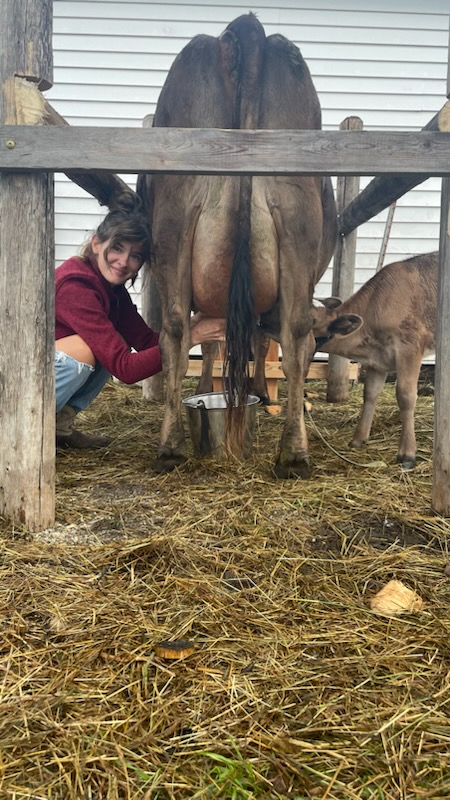
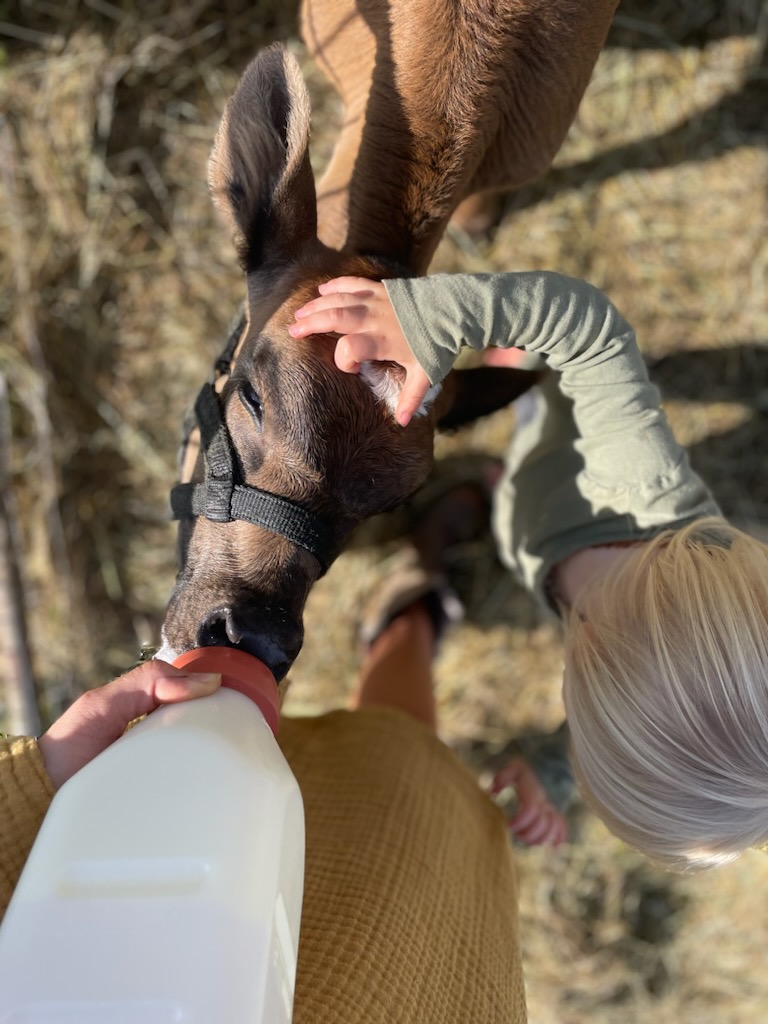
Feed
Our milk cow is pretty low maintenance and does really well without grain. But some milk cows need grain to hold condition because they’ve bred milk cows to have such a high milk production now and be dependent on grain. So they’ll end up getting too skinny without it. I wouldn’t ever want to own a cow like that. It doesn’t line up with our breeding / genetic goals for our herd and it’s expensive to buy grain.
Charlotte has 24/7 access to pasture all the warm months, then during the winter she gets grass hay that we cut off the pasture during the summer.
For during milking I give her about 5lbs of alfalfa pellets. During the winter I also do a daily 1/2 cup of black oil sunflower seeds to mimic the omegas she would have been getting from green grass.
Minerals
Minerals are SO IMPORTANT.
This is an area that I try to really focus on for them and keeping their mineral tubs always full.
I make sure she has access to:
- Fertrell dairy cow mineral blend (I had this mixed especially for her diet)
- Thorvin kelp
- Sea salt
- Epsom salt for magnesium
Then in their mineral bar spot I also offer Diatomaceous Earth and baking soda occasionally.

Fencing
You’ll want to have some fencing up before you bring your cow home.
We don’t need her running all over town because she got excited and busted through a weak fence.
We have a wooden post and woven wire fence around the whole perimeter of our 10 acres, with a gate on our driveway. Then we use electric strand fencing to rotationally graze them. It’s easy to move and they stay in electric really well. We got all our electric fence supplies from Premier 1.
If you don’t have a hard perimeter fence you could use three strands of a really hot electric fence to keep them on the property. Sometimes cows don’t respect hard fences as much as electric, so even if you don’t use the movable electric posts and strands I’d recommend putting an electric strand right on your hard fence so they don’t push on it.
Shelter
For our climate in Montana they don’t really even need a shelter. The summers don’t get that hot, and they can find some shade next to a shed or tree. Winters they usually do just fine.
If you are in a hot humid climate they definitely need shade and then possibly even fans during the heat of the day. Cows just do have a harder time with heat than cold.
So just depends on where you live if you want to make some sort of a shelter for them. Because we rotationally graze it also makes it harder to give them access to a shelter. You could build a movable shed or it would be ideal if you have trees in each paddock for shade.

Basic cow supplies
This includes things like:
- Halter
- Lead rope (we just use dog leashes that we already had)
- Grooming brush
- Curry comb
- Fly spray
You can find all of those things from Synergy


Hopefully these lists I’ve made come in handy when you are deciding what to prepare before bringing your first milk cow home too!
And beannachdan (blessings)!
Pin it for later!
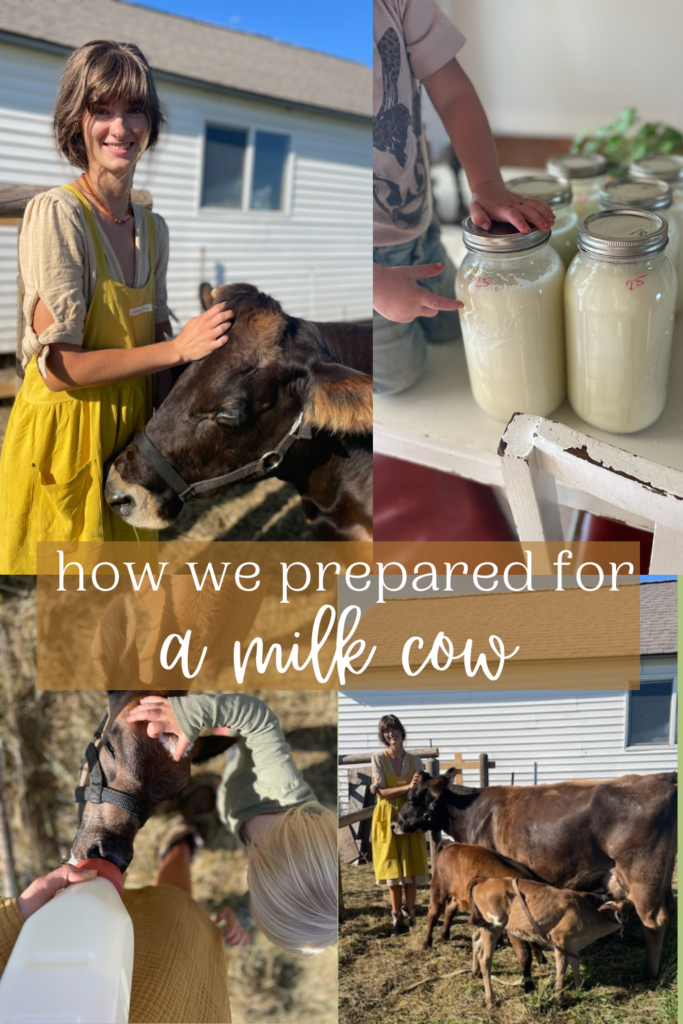

Leave a Reply